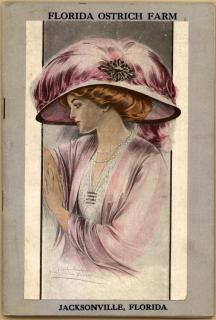 |
| via |
I’ve been researching hats lately, and came across some fascinating information concerning feathers.
We all know the iconic mega-feathered hats of the Edwardian era. The Edwardians were particularly enamored with plumage, but unlike their be-feathered predecessors, the Victorians and the Georgians, many a fine species of bird was taken to the brink of extinction by the incredible demand for ladies be-feathered hats.
Throughout history, hats have played a big role in indicating one’s status. We all know the famous scene in “The Duchess,” where Georgiana, Duchess of Devonshire, sports giant ostrich plumes in her giant hair, and starts a craze that would last decades. For the Edwardians, they took this to a new level, and often added entire birds to their heads, and sometimes these birds were fantastical creations cobbled together from several varying bird parts!
Popular plumage for hats extended beyond ostrich, to include heron, peacock, egret, osprey, bird of paradise, pheasant…even vulture. The more “common” feathers for adornment were garden fowl, pigeon, turkey, goose, and coque/rooster. These feathers were made into plumes, pompoms, aigrettes, wings, pads, bands, breasts, and quills, and not by marchandes, milliners, and craftsmen in quaint little shops, oh no, by massive factories employing thousands of women and children, and dealing in hundreds of thousands of feathers per day. In 1900, in North America, the millinery industry employed 83,000 people!
 |
| Chapeau, Esther Meyer, France, 1905-1910 Minoche de grèbe, plume de coq teinte, velours de soie |
Unfortunately, the demand for feathers began to damage the migratory bird population, and by 1918, lobbying groups such as the Audubon Society had succeeded in a federal ban on certain types of feathers, the Migratory Bird Treaty Act of 1918. Birds excluded from this law are still feathers available to us today – ostrich, turkey, goose, peacock, rooster, garden fowl, and pheasant, to name a few.
And ostrich is still expensive, though not quite as these feathers were in 1880, when their value per pound was almost equal to that of diamonds.
 |
| French plumes, which just means they’ve been curled on the end, adorn this Merry Widow hat – these are comprised of multiple ostrich feathers sewn together to get the full, drapey look. |
During The Great War, the fashion for massive plumed hats fell out of favor. They just weren’t practical anymore, not to mention the excess and expense of these chapeaus, and the preference didn’t come back after the War either. Cloche hats became the rage, and still featured many a fine feather, but not anywhere in the realm of what was being worn before 1914.
Still, you and I are easily seduced by the pretty pretty of plumes, poms, and pads, especially as 18th century and Titanic Era costumers. Nothing is so naked as a bonnet without a feather. 🙂
You can buy various types of feathers online, at craft stores, costume stores, and in the secret floral section of places like Michaels and JoAnns. Even a little feather goes a long way. 🙂



6 Comments
Anonymous
March 14, 2012 at 12:00 AMReally cool article! Its a similar story over here in England. The RSPB (Royal Society for the Protection of Birds) was set up in the 19th Century for this same reason. Follow this link to see more about it. http://www.rspb.org.uk/about/history/
Really enjoy your website, thanks.
Anonymous
March 14, 2012 at 12:09 PMI have a stash of peacock feathers that I bought at my zoo gift shop…they were a bit cheaper than crafts stores (they cut out the middle man I guess!)
Lauren R
March 15, 2012 at 9:08 PMThat's a pretty good use of the shed feathers at the zoo 🙂
Reneesance
March 14, 2012 at 5:44 PMGreat article! I'm always keeping an eye out for feathers on sale, especially post halloween when you can sometimes find big featherd masks or boas on sale at the halloween stores. I've also had good luck on craigslist with a lady who owns a small farm and collects dropped peacock and goose feathers for me!
Lauren R
March 15, 2012 at 9:09 PMOoo! That's a good deal! I should have mentioned too, if there is a sports store like Orvis, Cabelas, that sort of place, nearby that sells fly-tying materials, they often have a pretty amazing choice of feathers too.
textilehistorIE
March 15, 2012 at 3:41 PMVery cool post! And now I really want to rewatch the Duchess again!